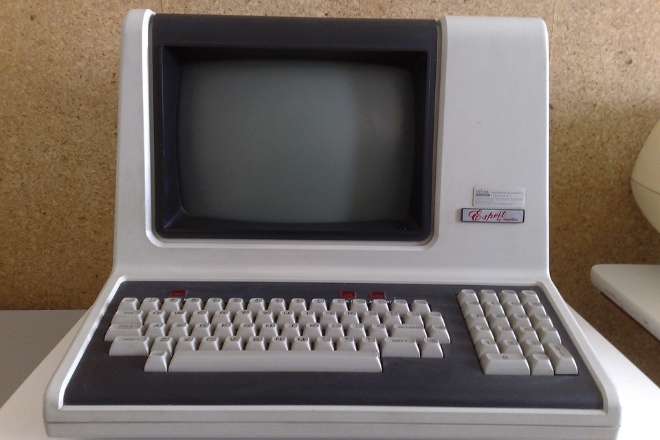
By Saurabh Saxena
Can you believe that on this day in 1959, the world first heard the technical acronym ‘COBOL’? The history of COBOL over the past 60 years is fascinating, and proof of COBOL’s durability. According to a report from Reuters, 43 per cent of banking systems in US are built on COBOL; 70 per cent of all business processing systems are built using COBOL; 80% of in-person transactions use COBOL; 95% of ATM swipes rely on COBOL code and 220 billion lines of COBOL are in use today.




Designed with Success in Mind
A government commissioned technical group, including the inimitable Grace Hopper, the ‘mother of COBOL’, pioneer Jean Sammet, and a small group of vendors, technicians and government officials, first conceived language they named Common Business-Oriented Language (COBOL), sixty years ago. Since COBOL was easy to use and portable, it quickly became one of the most important and used business programming languages across the globe.
Let’s take a quick look at COBOL’s history – it’s repeating!
COBOL was born out of necessity and was designed specifically for a purpose. Like English, there is a degree of ubiquity to COBOL. COBOL has adapted and expanded – it has changed and is changing to meet new demands and support innovative technologies. Industry improvements have enabled COBOL programming on distributed platforms and the mainframe using modern tools for development, testing and deployment. It still runs everything from old school batch processes, to back office support for interesting mobile applications that we see today. Many of the world’s largest corporations still speak fluent COBOL, where it excels at executing large-scale batch and transaction processing operations on mainframes.
Why COBOL has stayed relevant?
Today, most people don’t realize that their day-to-day routines are all dependent on this 60-year-old technology. Whether using an ATM, booking travel or filing an insurance claim, we all interact with COBOL-based systems in some way or the other, and will continue to do so.
COBOL is here to stay! 60 years from now, someone will write “COBOL is now 120!” Why am I so confident of COBOL’s future? Here are five reasons why it will remain immortal:
- Innovation – COBOL has constantly evolved over the years. Vendors have invested millions for R&D. There are ongoing standard efforts to meet the demands of IT industry’s evolution and the shifting technology landscape. It’s the major reason 2019 incarnation remains a genuinely contemporary platform for business system delivery
- History – With six decades of heritage, billions of lines of value, and hundreds of thousands of practitioners, the global COBOL community remains buoyant, bolstered by ongoing training, huge continued commercial and government sector usage, and vendor support
- Portability – The objective of the original COBOL design was to cross-compile and be transportable across platforms. This clarity of vision became extremely important in the platform availability gold-rush that began in the 90s. COBOL remains the most portable computer language, ideal for supporting Hybrid IT, or multi-platform ecosystems
- Business-Centricity – The primary goal of COBOL was to be a language for business. With precise arithmetic support, capabilities to manage and process vast amount of data, high performance and robust error management, COBOL remains unrivalled as a technical solution for business systems
- Readability – Again, designed at the outset, COBOL’s ease of learning, reading, and writing enables IT teams to spend less time on figuring out how to use it and resolving skills concerns, and more time to focus on business
Future – COBOL at 120
Looking ahead, many have zero doubts that COBOL will continue. Tens of millions of dollars are invested annually to ensure COBOL remains contemporary, and vendors will continue to support this essential language. COBOL’s future relevancy is widely predicted. Even though 60 years have passed, COBOL is still the language of business. With millions of global transactions processed every second, COBOL delivers adaptability and performance, outpacing many of its modern rivals. While some would question the continued use of COBOL, I see it as a language that has quietly powered six decades of economic growth.
The language that powers the mainframes – that run the world – is as relevant today as it was in the 1960’s. With the presence of new digital pressures, the mainframe and COBOL are back at the forefront for the modern developer, enabling innovation and transformation.
The key is innovation, enabling COBOL customers to do more with what they have. For many IT organisations, COBOL-based core business systems are their beating heart. It has corporate supporters, who recognise the ongoing value and support its future, by enhancing and augmenting the core language with big R&D investments. But COBOL doesn’t belong to them. COBOL’s biggest friends are the vendors and users who work with the language every day, shaping its future, by demanding progress in the shape of consumer-focused innovation.
Vendors prescribe transforming the systems- hosting these processes can create a business ready to thrive in a digital world – through a comprehensive solution across three key pillars of modernisation: Application, Process and Infrastructure. Certainly, key industry figures understand that COBOL has enduring value. It not only offers the most flexible, multi-platform language in the market, but also now delivers new integration with modern technologies including Visual Studio, Eclipse, agile tools and DevOps practices. COBOL has evolved and adapted to continue as the application backbone in the world’s most successful global companies. Modernising trusted COBOL systems is a proven path to success, which is why COBOL is and will remain to be the bedrock of digital transformation.
(The author is the Country Director at Micro Focus India)






















